FCT COMBUSTION NEWSLETTER: June 2022

Dear Friends,
I hope this newsletter finds you well, and you have enjoyed a happy and healthy first half of the year.
At FCT, we have been busy building new partnerships to better serve our valued customers and ensure we are always offering the best pyro processing solutions available, in line with our mandate of constant improvement.
One such partnership is our agreement with IKN GmbH, to deliver comprehensive clay calcining solutions for the production of green cement. IKN is a major supplier of rotary kilns and suspension calciners. FCT brings decades of experience in clay calcination and has developed two clay calcining technologies based on this expertise: FlashCalx™ flash calciner and RotaCalx™ rotary kiln. Together, we are now offering complete clay calcining lines, including deagglomeration, comminution, drying, grinding, calcining and storage.
Another strategic partnership to complement FCT’s existing portfolio of world-leading burners and fuel handling, is our agreement with Metal7, to deliver enhanced product and service capabilities to iron ore pelletizing customers in Brazil. FCT will now supply a range of Metal7 iron ore pelletizing solutions, including green pellets screening and material handling in Brazil.
We are very pleased to be able to offer these expanded product and service capabilities and remain committed to delivering the best solutions for our customers and maintaining our valued relationships. We look forward to presenting at upcoming conferences to share our knowledge and keep in touch, starting with Cemtech Asia being held in July.
Until then, you might like to read or download our ‘Burner Q&A’ session included within this edition of the newsletter, where we answer some frequently asked questions about best practice burner design for different fuel types, how to overcome common challenges for optimal performance and reduced emissions, as well as future trends to be aware of.
I hope that you will enjoy reading our latest newsletter, and please do not hesitate to contact our team anytime if we can be of help. You can contact us via our contact page or follow us on LinkedIn
Wishing you all the best,

Adriano Greco
FCT Group CEO
PROJECTS ACROSS THE GLOBE
RECENTLY COMPLETED OR CURRENTLY ACTIVE PROJECTS ACROSS FCT COMBUSTION INCLUDE:
AUSTRALIA: BHP Olympic Dam
FCT is delivering an oxy-fuel burner package for BHP’s flash smelting furnace at Olympic Dam in South Australia. The upgrade will extend the life of the furnace. In addition to the custom burners for both the North and East walls of the Settler Bath, accompanying burner management systems, valve trains, oxygen analysers and ancillaries are also included within the scope.
AUSTRALIA: Albermarle, Kemerton
FCT has delivered and is commissioning the combustion system and gas analyser to Metso:Outotec’s lithium plant in Kemerton, WA.
BRAZIL: Vale, Vitoria
FCT has delivered 196 burners to Vale’s iron ore pelletizing plant in Brazil. The scope also included the necessary valve trains, flame sensors, igniters, gas analysers, flow meters, and various other equipment to convert the kilns to natural gas and improve operational safety. Commissioning of 46 burners and equipment for Kiln 3 is complete, with commissioning of burners and equipment for subsequent kilns to follow later this year as scheduled in accordance with planned stoppage and availability.

Burners and valve trains being manufactured for Vale in Brazil
BRAZIL: Icon Máquinas, Criciuma
FCT has been awarded the contract to supply 3 new hot gas generators to Icon Máquinas in Criciuma, for which the final customer is Vale’s New Steel project. Two of the natural gas fired Hot Gas Generators will be installed in the Vitoria plant, and the third Multi-Fuel equipment will be installed in Vargem Grande, MG. All Hot Gas Generators will be supplied in partnership with Icon, who will integrate the equipment to their dryers.
BELGIUM: Cimenterie CBR, Lixhe
FCT delivered a hot gas generator with accessories and control system. The hot gas will be used to preheat raw material as part of an expansion of the EU H2020 Leilac (Low Emissions Intensity Lime & Cement) Pilot for CO2 emission reduction. Commissioning is expected for mid-July 2022.
CANADA: Lehigh Hanson, Picton
FCT has delivered a set of K-Jet burners to be installed in the Calciner of the Picton plant in Ontario, Canada. The K-Jet burners were designed to fire natural gas.
CANADA: Undisclosed client
FCT has been awarded the contract to supply a new hot gas generator in Canada. The supply comprises the complete hot gas generator including the burner, valve train, igniter system and the components to safely operate the system. The new HGG will combust natural gas to generate hot gases at controlled temperatures to supply thermal energy to a rotary dryer.
CAMEROON: Undisclosed client
FCT has delivered a complete fuel oil system for a calciner and a hot gas generator, from truck unloading pumps to valve trains inlet. The scope includes tanks, filtering, pumping and heating stations. Commissioning is expected for 2022.
FRANCE: HeidelbergCement, Bussac Foret
FCT has been awarded a contract by DAL Engineering Group to deliver a Turbu-Flex™ burner for HeidelbergCement’s Bussac Foret plant. The targets of the project are to maximise the use of alternative fuels as well as to improve combustion control. Commissioning is expected for the beginning of 2023.
GERMANY: HeidelbergCement, Hannover
FCT will commission a Turbu-Flex™ burner for HeidelbergCement’s Hannover plant in Germany, following the successful commissioning of a Turbu-Flex™ burner at the company’s Burglengenfeld plant earlier this year.
The targets of the project are to maximise the use of alternative fuels as well as to improve combustion control. The supply also included accessories and add-ons to the burner, as well as igniter, flame sensor, fans, blowers, BMS and spare parts. Commissioning is expected for the second half of 2022.
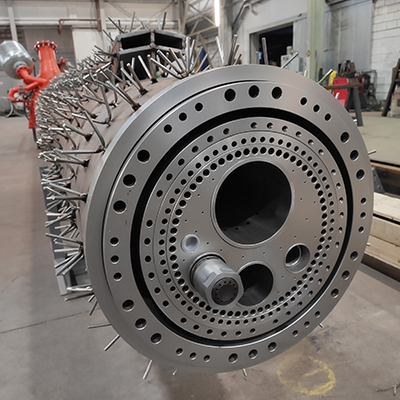
A Turbu-Flex™ burner was recently delivered to HeidelbergCement’s Hannover plant.
HONG KONG: Green Island Cement
FCT delivered a Turbu-Flex™ burner and trolley for Green Island Cement’s kiln to reduce NOx emissions by 15% and reduce fuel consumption whilst maintaining existing clinker quality.
JAPAN: Sumitomo Mining & Metals
FCT has commissioned a burner to Sumitomo Mining & Metals in Japan, for ferro-nickel reduction application. The burner will ensure a high degree of flexibility in heat flux profile to allow for scale-up in the future as the client’s needs change and grow.
NAURU: Republic of Nauru Phosphate Corporation (RONPHOS)
RONPHOS has two rotary dryers for drying phosphate rock, each with its own hot gas generator. FCT has delivered a combustion system including one oil burner, a primary air fan, an oil pumping skid, an oil valve train, and Burner Management System. The combustion system is designed to utilise both waste oil and diesel. Commissioning is expected for October 2022.
OMAN: Vale, Sohar
FCT is commissioning a Gyro-Therm™ burner for iron ore pelletizing grate-kiln application at Vale’s plant in Sohar, Oman.
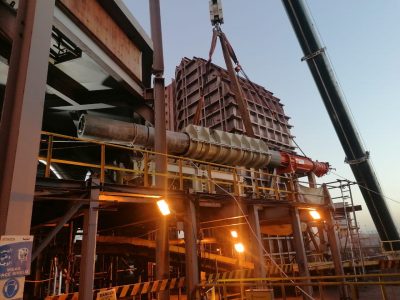
FCT has delivered a Gyro-Therm™ burner to Vale’s iron ore pelletizing plant in Oman.
TURKEY: Cimentas Kars, Kars
FCT is upgrading the burner in the Kars plant to a Turbu-Jet+™ design, to allow for higher momentum and to improve combustion of hard-to-burn fuels including petcoke, in challenging operating conditions. Commissioning is expected for June 2022.
USA:Graymont, Pleasant Gap
FCT has been awarded a contract to supply two Gyro-Therm™ burners to Graymont’s Pleasant Gap plant in Pennsylvania. The two spare burners will be quick replacement burners for their existing equipment operating since 2014. The burners will be identical to the existing equipment being able to fire up to 100% coal and 100% natural gas.
USA:Texas Lime Co., Cleburne
FCT has been awarded a contract to supply a new dual-fuel Gyro-Therm™ burner for the Cleburne plant in Texas. The new main burner can fire up to 100% coal and 100% natural gas. The supply includes the accessories and add-on to the burner, as well as igniter, flame sensors, fans, and burner trolley.
USA:Mississippi Lime, St Genevieve
FCT has been awarded a contract to supply a new dual-fuel Gyro-Therm™ burner for the St Genevieve plant in Missouri. The new main burner can fire up to 100% coal/petcoke mix and 100% natural gas. To complete the burner system, FCT will supply an automatic natural gas fired pilot, and a NFPA 86 compliant valve train for the safe start up and shut down of the natural gas.
USA:Lehigh Hanson, Redding
FCT has been awarded a contract to supply a new Turbu-Jet™ burner to the Redding plant in California. The burner is a second unit, delivered complete to the customer, aiming to minimise maintenance time during outages. The burner has multi-fuel capabilities, being able to fire coal, solid alternative fuel, and natural gas.
USA: Ash Grove Cement, Chanute KS
FCT has been awarded a contract to supply a new multi-fuel burner for the cement kiln in Chanute Plant. The new Turbu-Jet™ burner system will be able to fire up to 100% coal/petcoke, natural gas and 40% liquid waste.
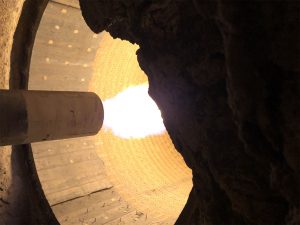
Multi-fuel Turbu-Jet™ burner being installed at Ash Grove’s Chanute plant.
USA:Lhoist, Natividad
FCT delivered a set of equipment designed to improve the plant’s reliability and safety. After an audit, a new igniter, flame sensors, valve train components and BMS were provided to bring the plant to most recent safety and compliance regulations.
USA: Ash Grove Cement, Leamington
FCT has been awarded a contract to supply a set of K-Jet Calciner burners and a warm-up burner for Ash Grove’s Leamington plant in Utah. The burners will improve the mixing and heat distribution when operating with natural gas. To complete this engineered solution, a dedicated safety gas valve train for the safe start up, control and shut down of natural gas will be supplied, as well as a new Calciner BMS system.
USA: Ash Grove Cement, Durkee
FCT delivered a Gyro-Therm™ burner to Ash Grove Cement’s Durkee plant in Oregon. The burner is a second unit, delivered complete to the customer, aiming to minimize maintenance time during outages.
USA: US Silica, Vale OR
FCT has been awarded the contract to supply a safety system upgrade for kiln 1 installed in US Silica’s plant in Oregon. The project aims to update the existing natural gas valve train to comply with the latest NFPA safety requirements, including new ignition system. A new burner management system will also be installed.
UNDISCLOSED COUNTRY/CLIENT
FCT has delivered 11 Gyro-Therm™ burners to an undisclosed client in Eastern Europe. The burners were delivered across 6 of the client’s cement plants, with the main target being to reduce specific fuel consumption. The burners are designed to fire natural gas and solid alternative fuels. Control systems, igniters, igniter valve trains, flame sensors, and accessories were also included within the scope. At this stage, one of the burners has successfully been commissioned, the second is currently being commissioned, with the others scheduled to follow.
UNDISCLOSED COUNTRY/CLIENT
FCT has delivered a set of 20 natural gas burners for an iron ore pelletizing plant. The scope also includes valve trains, flame sensors, igniters, flow meters, fans, local control boxes and spare parts.
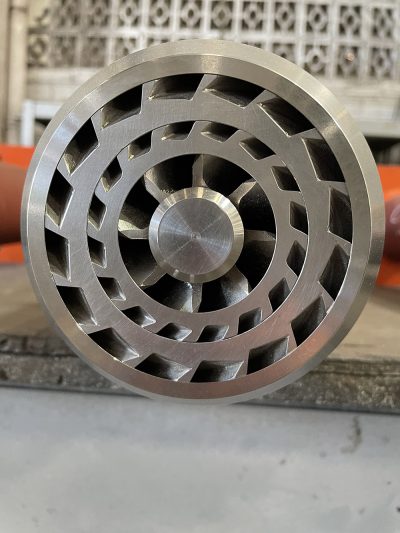
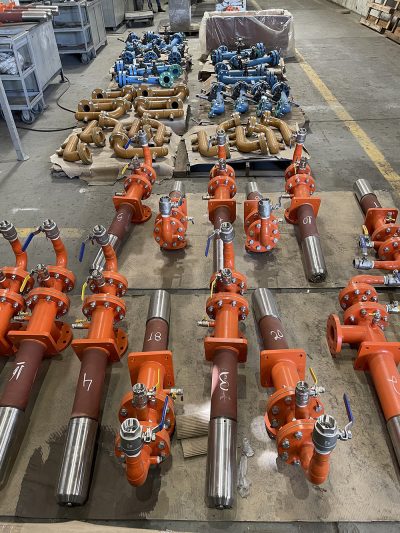
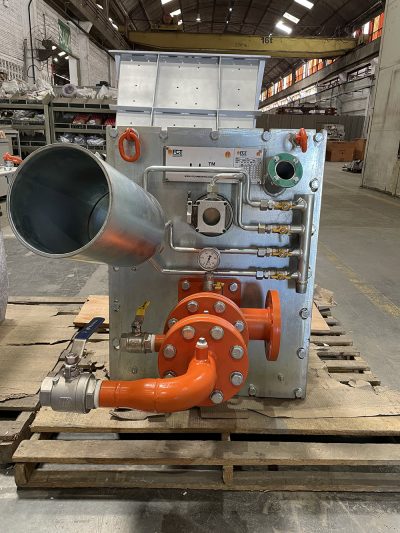
FCT has delivered combustion equipment for an iron ore pelletizing plant.
PEOPLE OF FCT
At FCT, we know that our continued success is largely due to our team’s commitment to providing the best products, service, and expertise across all our offices. We are pleased to announce the newest additions and changes within our team:
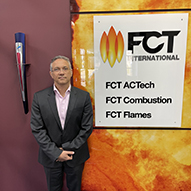
Ahmed Zoheir, Chief Financial Officer, FCT Group
We are pleased to introduce Ahmed Zoheir, who commenced in the role of Chief Financial Officer across the FCT Group in March 2022.
Ahmed brings a wealth of experience in directing financial performance, having previously been Chief Financial Officer of companies both in Australia and in the United Arab Emirates including Emirates National Investment, Mayo Foods, Khidmah, and more.
Ahmed holds an MBA from Paris ESLSCA Business School, as well as a Bachelor’s Degree in Accounting and Finance from Ain Shams University.
CONFERENCES & EVENTS

Joel Maia, CEO of FCT Europe will attend Calcined Clays for Sustainable Concrete 2022 from 5-7 July, and will be available to meet and discuss FCT’s Calcined Clay Technologies. To arrange a meeting, please contact Joel.
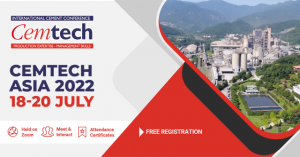
Cemtech Asia, held online from July 18-20, 2022
• Technical Director, Pedro Ladeira, will present on the topic “Activating Clay to Help Achieve CO2 Emissions Goals by 2050″
• Roger Meier, Business Development Manager for FCT ACTech will present “Online Analyzers Helping Cement Producers with CO2 Production Targets”

Fernando Libonati, Head of Business Development (Asia-Pacific & Middle East), will attend Hydrogen Connect Summit 2022, being held 8-9 September in Brisbane, Australia.
FCT was pleased to attend the IEEE-IAS/PCA Cement Industry Technical Conference in Las Vegas from May 1st to 5th , where Technical Director Pedro Ladeira presented “Activating Clay to help achieve CO2 emissions goals by 2050”. It was fantastic to meet our customers and associates again at this important event!
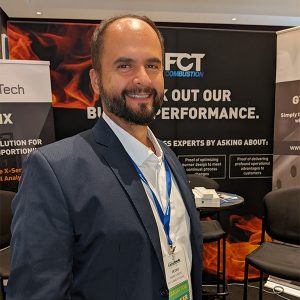
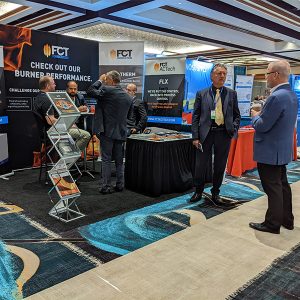
FCT announces strategic partnership with Metal7
FCT Combustion (FCT) and Metal7 (M7) are pleased to announce the execution of a Distribution Agreement to provide enhanced product and service capabilities to valued customers within the Brazilian region.
FCT will now supply a range of M7 iron ore pelletizing solutions, including green pellets screening, material handling, and slurry filtering, in addition to FCT’s existing portfolio of burner and fuel handling technologies.
FCT has a strong local presence in Brazil and is the world-leading supplier of burners to iron ore pelletizing plants with specialized and proven technologies for both straight grate and grate-kiln application.
For more information, please click here to read the full press release.

FCT provides cauldron to the Queen’s Platinum Jubilee
FCT was pleased to provide the beacon for the Queen Elizabeth’s Platinum Jubilee celebrations in Canberra, Australia, last month. The celebrations were in recognition of Queen Elizabeth II’s 70 years of service as Monarch.
Australian Prime Minister, Anthony Albanese, ignited the beacon on June 4, which was one of 54 beacons lit across Commonwealth capital cities. To view a gallery of the lighting, please click here
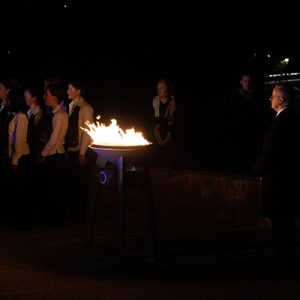
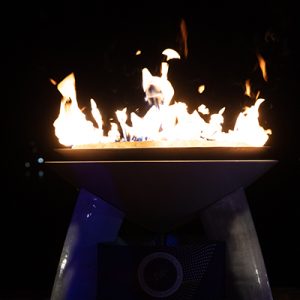
A Burner Q&A with FCT
In the June edition of World Cement, FCT participated in a burner Q&A session. Download the article here, or keep reading below to learn more about optimal burner design for different fuel types, emissions reduction, improved performance, and increased productivity.
FCT: Different fuel means different particle sizes, densities, moistures, and calorific values together with different drying, ignition, and burnout times as well as combustion kinetics. The type of alternative fuel, the variation in types and the ratios in which they are delivered to the burner can impact on flame length and heat flux profile inside the kiln as well as emissions. Most fuel dosing systems are also working on volumetric basis, which means that the thermal energy being supplied to the burner is variable over time, even if the volumetric dosing is constant, due to the variable fuel characteristics.
To mitigate all these effects, the burner must be designed to allow very flexible operating in such a way to allow for proper aerodynamic and combustion control, enhancing entrainment of secondary air into the flame. FCT recommends the use of our Turbu-Flex™ Burner with its unique axial air tip design, reconfigured swirl, alternative fuel lofting air which is split between lifting the material from the bottom of the conveying pipe and dispersion air which disperses the fuel into the primary and secondary air as it leaves the burner tip.
Apart from the challenges at the kiln burner, it is important to mention that some fuels are inherently better suited to the calciner, and it would not make sense to overcome the difficulties of using them at the kiln, when it would be much easier to use them at the calciner. Such fuels include those with higher moisture, lower calorific value, larger particle size, longer required combustion time, or low volatile content, among others.
As a general rule, easier to burn alternative fuels should be targeted at the kiln burner, and harder to burn fuels at the calciner. In case there is no calciner available, a mix between hard and easier to burn alternative fuels would be the best compromise to increase the overall substitution rate, with lower impact on the kiln operation. Another solution could be the use of satellite burners, which is further detailed in the next questions. CFD modelling could also be a good option for specific problem solving.
The use of hydrogen as a fuel in cement production is also an emerging trend which can impact burner performance. Due to its high cost and low availability at present, hydrogen could be considered an alternative fuel in the short to medium term. Production of hydrogen through electrolysis also produces oxygen, so that the availability of either or both for the burner systems opens new possibilities for control of flame characteristics optimised for cement production.
FCT: It is generally believed that minimizing primary air amount is one way to reduce Nox generation at the burner. However, in practice, the answer is not so simple. In isolation, the reduction of primary air amount can lead to an increase in NOx if it causes a delayed ignition of the fuel, for example. Apart from that, the reduction of primary air alone can also affect clinker quality, decreasing cement strength and can cause issues with the kiln operation in terms of slower responsiveness, increased alkalis and sulphur cycles in the kiln, and uncontrolled combustion.
The important point is that NOx emissions can be minimised with reduced primary air, as long as it comes with the same or better combustion control. Apart from the quantity of primary air, the distribution in the flame can have a significant impact on NOx emissions. Delayed entrainment of secondary air can decrease NOx, as long as it does not cause delayed fuel ignition. Early ignition of the flame has long been known to reduce NOx and burner tip and primary air design is critical to the ignition point. The location and momentum of the primary air at the burner tip is critical in how and where secondary air is entrained into the flame. It should allow for a fast fuel igniton but a slower combustion overall – a very fine balance. Water injection into the flame from the burner tip can also be useful in controlling peak temperatures which are another factor in NOx generation, but obviously it has its penalties.
Where possible, a very effective and economically advantageous strategy to reduce NOx emissions is to use alternative fuels. Their characteristics such as higher moisture, larger particle sizes, or low calorific values, among others are such that they slow down the combustion. Fuels with lower nitrogen content can also be used to reduce NOx, though with limited results. A flexible burner that can be adjusted to different conditions and fuels is paramount.
The actual burner technology can in some cases have a huge impact on NOx emissions, for example, the Gyro-Therm™ burner for natural gas uses completely new technology for mixing fuel and air that minimises NOx formation while producing a short hot heat flux profile ideal for cement kiln operation.
Generally speaking though, it is undesirable to compromise product quality, kiln output, fuel consumption, refractory life etc to control NOx emissions, and it is better to treat the Flue Gases to remove NOx from the exhaust stream.
FCT: Satellite burners can play a role in modern burner systems up to a certain limit. Satellite burners are located in a high oxygen area in the kiln and are usually positioned behind and above the main kiln burner. They can allow for better drying of the fuel before it enters into the flame, allow for increased flight time (especially for 3D or larger particles), and when the design is right, they can allow for operational flexibility and certain aerodynamic and combustion control.
However, in the main burner, although the AF is injected in an area of lower O2, where reduced drying can take place before combustion and flight time is slightly reduced, the benefits of the all the fuel being in the burner bring enhanced operational flexibility and aerodynamic and combustion control. Additionally, there is the relative positioning of the satellite burner and main burner which limits the amount of fuel that can be delivered by a satellite burner as it is not ideal to move the majority of the fuel energy input to a position far from the kiln center (as the satellite burner does). Hence satellite burners are a great tool to begin using alternative fuels without investing in a new burner, or to complement the operation of an alternative fuel burner, especially with harder to burn fuels.
FCT: There are some basic design rules that need to be followed to maintain the flame shape despite the kiln operational fluctuations that occur – with the main parameter relating to the burner momentum being sufficient to overcome fluctuations in secondary air flow and temperature.
FCT also believes that the burner and particularly the burner tip should have no moving parts. Maintaining openings in channels as originally designed means the performance of the burner will not change over time. It is difficult to reproduce the exact geometry when parts move and where 1 mm can make a difference. Operational flexibility is provided by giving the operators the ability to change total momentum and swirl ratios by adjusting air supply settings and proportioning air to different channels with valving at the back of the burner. It is also important to have enough instrumentation to get data from the process and the burner operation so changes to settings can be made on the basis of such data. Consistency in all areas of kiln operation, including standardised operating procedures and stable raw meal chemistry, all lead to stable firing rates, better combustion and aerodynamic control. Consistent mixes of fuels and steady feeding of alternative fuels leads to reproducible flame. However, it is a known fact that there is no such thing as a stable operation. When fuel mixes or alternative fuel properties, raw materials, temperatures and others do change, it is important to have a flexible burner design which can be adapted to cope with the new conditions.
The interaction of the flame and kiln aerodynamics can be a critical determinant of refractory life. The burner design drives the heat flux profile, which is a key driver of coating building and stability. Good stable coating in the burning zone is the best way to increase refractory lifetime in the kiln region under the most thermal stress.
However, the burner works in a certain environment, which is different in each kiln. The burner design should be tailored to the unique kiln in which it is installed, taking into consideration specificities in terms of secondary air conditions, kiln, kiln hood and cooler geometries, temperatures in different streams and parts of the process as these can influence reasonably how the burner should be designed, how the flame and kiln heat flux profile are affected, and how these impact on stable coating, and volatile cycles among other factors. In some extreme cases, such as when a new burner is being sought to solve an existing problem in the kiln, modelling can be an effective tool for optimisation.
The fundamental design choices underlying the burner’s architecture can have a major effect on the lifespan of the burner itself. Moving elements at the front of the burner are key weak points, where wear or thermal damage can cause significant alteration of the burner’s performance, potentially leading to kiln refractory damage. FCT’s design philosophy is based on simple and robust construction methods which are intended to maintain the aerodynamic integrity of the burner, coupled with science and modelling driven detail design aimed to meet the specific kiln’s operational requirements.
The right choice of materials against wear, as well as better instrumentation to monitor and adjust operating conditions, are extremely important for extended burner lifetime. FCT is also a pioneer in the use of innovative thermal treatments on burner tip components to improve cooling. Burner thermal management is a very important component in the work required to extend burner operational lifetime and the ability of the burner to survive adverse events such as power failures.
A design which is maintenance-friendly is paramount to bring the burner back to its original state if a problem does occur.
Industry 4.0 and digital technologies are powerful trends that allow for a larger quantity, and higher quality, of information gathering from burner and process operation. With these benefits, better and faster decisions can be made and replicated time and time again. Improved learning about the process can also be achieved more efficiently.
As initiated by the expert supervisory systems from the past, the interaction between different equipment, sensors and processes can be better coordinated when more information is available, allowing for easier operation, better quality, lower costs, and lower emissions.
FCT: The next steps in burner design depend which global region is being considered, as different areas have different environmental concerns, expectations, fuels, different stages of technological development, and so on.
In very broad terms, obvious next steps are going to be in the utilisation of hydrogen and oxygen due to their environmental appeal on CO2 reduction. Depending on the very many supply possibilities, these may be available and used either separately or together, in quite small or potentially quite large quantities.
Research into where in the burner each of these gases might be added, when in the operation and in combination with which fuels they might provide the most benefit is going to be required. Some of these questions might be provided with general answers. However, in accordance with FCT’s overall philosophy, careful consideration of these and other questions has to be done on a case by case basis. Again, in some cases, modelling can be an useful tool.
Novel materials and treatments are likely to feature in near future designs, particularly in the areas of wear and thermal management.
Modular burner designs might well become the norm where plants are forced to adapt to rapid changes of their available fuels. Rather than designing a burner for several different fuel that may or may not come into operation, which may compromise the overall design in benefit of the flexibility, it may prove substantially better to provide and easily upgradeable burner with replaceable sections that allow a smaller set of conditions (for example, fuels), to be used closer to their optimum design.
Looking further ahead, the availability of real time information on kiln operating conditions could lead to kiln modelling and some automated burner adjustments to maintain real time optimised burning conditions as process operations fluctuate.


